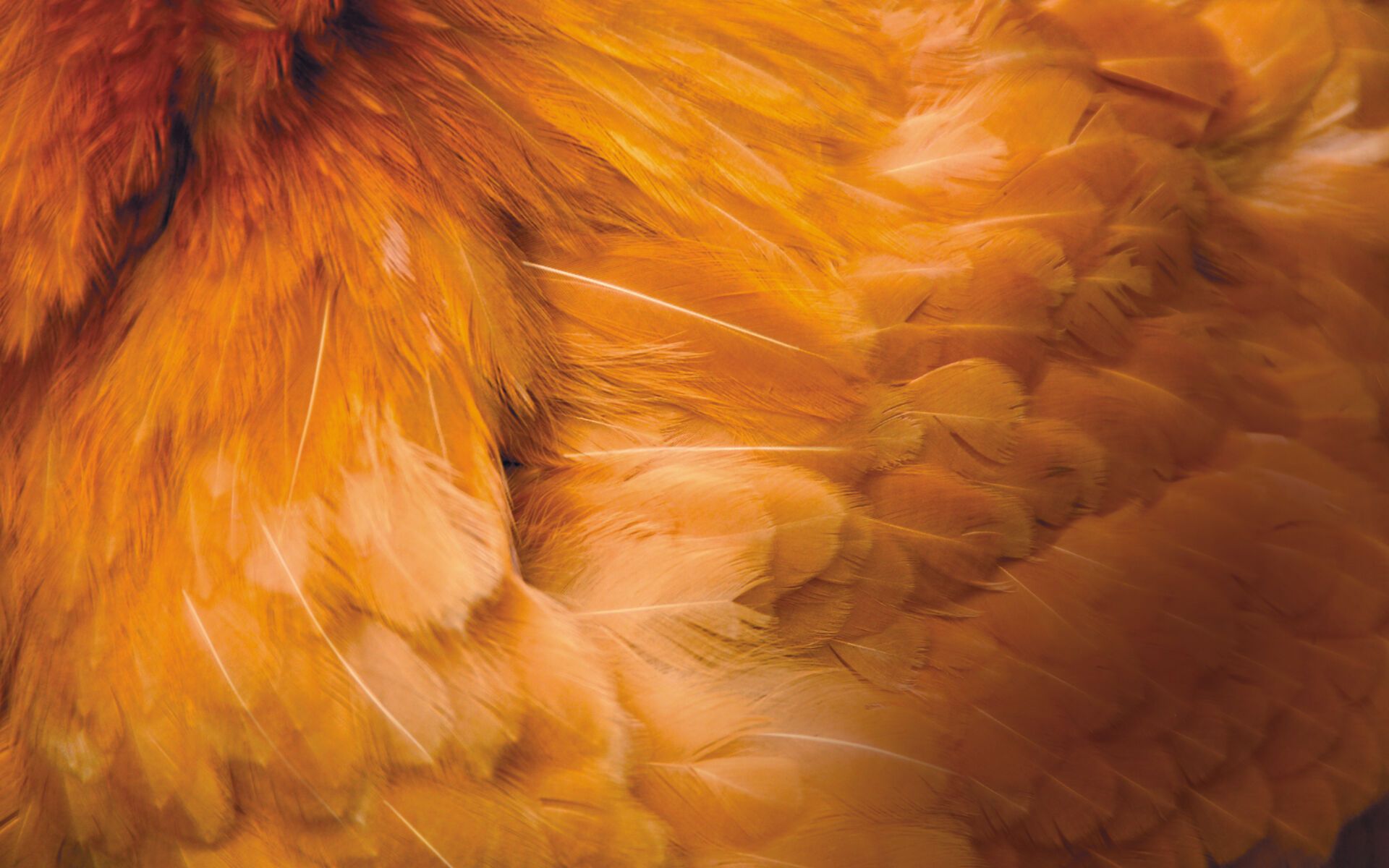Do Not Underestimate Feathers

In This Article
-
Living beings are equipped in advance with a number of skills and devices perfectly suited according to the troubles and difficulties they will face in their lives. Feathers are one of those equipment, which are perfectly designed for survival of animals.
-
Bird feathers have diverse characteristics for different tasks such as flying, maintaining body temperature, and sensing through touch.
-
The structure and diversity of penguin feathers will be a source of inspiration for those modeling heat insulation technology based on how the tiny structures and molecular architecture of penguin plumage is designed to limit heat transfer.
In daily parlance, feather is used in various idioms or phrases such as “light as a feather,” “feather-brained,” or “featherweight.” The word is often used in a diminutive effort to denote simple, easy, or unimportant things. However, a recent study has revealed that feathers play vital roles and are miraculous beyond perfection.
For survival, living beings are indebted to a number of skills and devices they are equipped with in advance by creation perfectly suited according to the troubles and difficulties a living being will face and what they will need. Similarly, feathers are perfectly designed for survival.
Structure of bird feathers
Bird feathers have diverse characteristics for different tasks such as flying, maintaining body temperature, and sensing through touch. Feathers are made of a sulfurous protein called keratin. Our nails and hair are made of the same substance. Keratin is synthesized as the cells in the dermis die during their upwards division and multiplication. Keratin is a very durable and flexible substance, and it is quite resistant against chemicals and corrosion. Therefore, it is the most convenient substance for feathers.
Seen through a microscope, the microanatomy of a feather looks like very finely embroidered lacework. A typical feather has a long and hard pipe called the rachis at the center, with hundreds of side branches (barbs) coming out of it, as well as side branches coming out of the barbs, called barbules. Finally, barbicels attach barbules to one another (Figure 1). Thanks to barbicels, barbules are interlocked just like a zipper, ensuring the integrity of the feather as a watertight surface. If the barbules are somehow unzipped and released from each other, the bird can just shake off or preen them with its beak in order to return them to their former state.

In order to survive, birds must always keep their feathers clean, well-maintained, and ready to use at any time. They use the oil sacs in their tails to care for their feathers. Using their beaks, they take some of this oil and distribute it through their feathers to preen and polish them. This oil prevents water from reaching the skin of swimming birds when they are in water or under rain. Moreover, birds fluff up their feathers so that air moves between them, preventing their body temperature from falling in cold weather. In contrast, they keep their bodies cool in hot weather by sticking their feathers to themselves and reducing the air in between.
Types of feathers
The feathers on different body parts have different characteristics and functions. Wing feathers, which are larger and have extensive surfaces, open up and expand their surfaces to generate a force for lift. Tail feathers, which have a similar structure, help to steer and brake during flight. As a bird flaps its wings on the downstroke, its feathers come closer to each other and prevent air from leaking between them. During the upstroke, the feathers are quite separated and positioned to allow air to pass between them. In order to maintain their ability to fly, birds undergo molting. Feathers that are worn-out or abraded are shed as they are unable to fully perform their duties.
There are three main types of feathers.
- Contour Feathers
These feathers are large and long and found on the outside of the body, such as the wings or tail, and determine the bird’s body type and posture. These feathers, which help a bird to fly and steer, contain all the feather components mentioned above.
- Plumules
Plumules lack barbicels in their structures. They are not interlocked and look tasselly. These feathers are created for thermal insulation, and they are located at the backs and lower parts of contour feathers and are abundant on the chest and abdomen. The bodies of young birds are generally covered with plumules.
- Filoplumes
Filoplumes have a short calamus and few small barbs without barbicels near the tip of a thin, long rachis. In some birds, the filoplumes near the mouth and nose have sensory functions.
One can come across various types of feathers depending on age, season, gender, and breeding season.
Antarctic penguins have to endure some of the harshest conditions in the world. Emperor penguins (Aptenodytes forsteri) spend six months in one of the coldest habitats on the planet during winter and breed in Antarctica, where temperatures drop below -40 degrees Celsius and winds sometimes reach speeds up to 100 kilometers per hour. Their feathers are the best gift allowing them to survive in Antarctica. To feed their young, penguins dive to depths exceeding 500 meters in waters measuring -1.8 degrees Celsius, going deeper and further than other waders. Emperor penguins rely on their special feathers to provide 80-90 percent of their insulation and maintain a core body temperature of 38 degrees Celsius. The insulative integrity of the feathers persists even at their maximum dive depth of 560 meters.
As the stiff outer layer of feathers protect the bird’s skin, the contour feathers provide an impenetrable and rigid waterproof cover. Not only is there no consensus of penguin feather density, but published values vary fourfold, from 11 to 46 feathers per square centimeter.
In a study conducted to see how emperor penguin feathers function as protection against the cold, penguin carcasses were examined. For this purpose, the carcasses were skinned before the contour feathers were removed from the excised skin sections. Then, the attached feathers were carefully removed, and the location of each was marked.
While the initial focus was on the body plumage, for the purpose of a broader orientation, a detailed feathergram was made for the head, body, wings, tail and legs, and it was seen that a thermal insulation system, which defies any explanation, was in place.
Feather distribution model
To calculate density, the feathers were cut carefully and photographed and then, using special software, algorithms of this distribution were identified and expressed in mathematical formulas. Repetition of larger contour feathers and smaller plumules and filoplumes in certain numbers and certain intervals, as well as the correlation between air gaps in between and feather density and heat retention, signified the architectural integrity of a perfect divine project.
To make a gross estimate of the total number of feathers on the body (excluding the head, tail, legs, and wings), a model was developed using feather density and distribution patterns as well as morphological measurements of emperor penguins. Based on the lateral surface area (LSA) equations for two conical frustums, it was shown that the body shape in the form of two conical frustums was ideal and what the height of this body was (Figure 2).

Feather count model and total body feather numbers
A drawing was created to illustrate the distribution pattern of all feather types on emperor penguins. Although contour feathers are uniformly distributed across the penguin’s body, the pattern of all insulative feather types is complex and non-uniform, still following a different formula. According to this formula, each contour feather is surrounded by nine plumules.
Estimates suggest that each penguin had 24,000 to 30,000 contour feathers and 120,000 to 150,000 insulative feathers. Plumules are the main source of insulation, as these feathers form a dense mat beneath the contour feathers and are four times as numerous as other body feathers.
It was suggested that this arrangement of feathers facilitated penguins’ rapid underwater ascent, allowing them to fly out of the water on to sea ice. It was also argued that the release of air trapped in the downy layer into the boundary layer reduces drag, allowing penguins to reach high underwater speeds before exiting the water. The barbs of the feathers, and the accompanying barbule structure, causes small bubbles to form in the water, and as a result, it appears as if a trail of smoke is coming from the feathers as the penguin swims in the water.
The finding that there is a higher density of contour feathers on the ventral side compared with the dorsal of emperor penguins may be important for tobogganing—that is, exiting the water and resting on ice. The higher density on the chest provides more cushion for tobogganing over rough edges and for landing on the chest after leaping exits from the water. In addition, the higher ventral feather density provides increased insulation while resting prone on the ice.
Nevertheless, body feather density is not static and will change based on the season thanks to amazing design. Emperor penguins start foraging after molting in January, to prepare for the breeding season. In April, at the start of the breeding season, penguins weigh 30-40 kg, with lipid mass accounting for up to 25 percent of body mass. At this time, feather density will be lowest, and increased subcutaneous fat will provide more insulation. Over the next three months, body mass can drop 35-50 percent in the fasting male, which cannot go hunting as it looks after the egg in its incubation period, with 80-90 percent of the loss owing to subcutaneous fat reduction. The resulting reduction in girth and surface area will increase feather density without changing the number of feathers. At the end of the fast, when temperatures are near the coldest of the year and males have lost most of their lipid mass, feather density will be the highest. Although only a function of geometry, the increased feather density with decreased girth is advantageous.
Feathers serve other purposes, too. The mechanoreceptors at the calamus of feathers inside the skin are sensitive enough to detect even the slightest vibration and send it to the brain. Penguins are informed of even the slightest vibration in the air or water, and, as such, they can successfully hunt for fish or evade attacking seals thanks to these receptors.
The structure and diversity of penguin feathers will be a source of inspiration for those modeling heat insulation technology based on how the tiny structures and molecular architecture of penguin plumage is designed to limit heat transfer.
References
- Williams, C.L., Hagelin, J.C. and Kooyman, G.L. (2015): Hidden keys to survival: the type, density, pattern and functional role of emperor penguin body feathers. Proc. R. Soc. B 282: 20152033. http://dx.doi.org/10.1098/rspb.2015.2033









